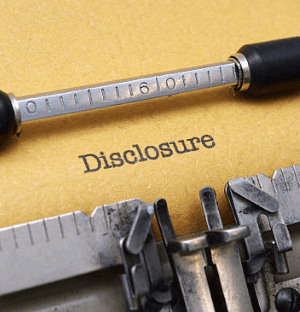Top 10 Risks of Charter School Bond Defaults – #2 Financial Issues
School Improvement Partnership is highlighting the causes or triggers of defaults on municipal high yield charter school bonds in a weekly series entitled THE TOP TEN TRIGGERS OF CHARTER SCHOOL BOND DEFAULTS. In case you missed it, Risk # 10 was School Safety; Risk # 9, Construction Risk; Risk # 8, Shifting State Support for Charter Schools; Risk # 7, School Leadership, Risk # 6: Poor Management, Risk #5: Student Retention; Risk #4: Authorizer Relations; Risk #3: Poor Academic Performance
Second Most Common Trigger: Financial Issues
In its review of the 52 high-yield charter bond financings that have defaulted since the first such issue in 1998[1], School Improvement Partnership has found that financial issues – issues beyond simply not having sufficient net revenues to pay debt service – often precede or trigger a payment default. Financial issues can usually be identified by one of three questions: 1) Are the numbers right; 2) Is there something omitted from the numbers; and 3) Is the financial information being reported on a timely basis. Any one of these issues can foreshadow a payment default for even the most sophisticated charter school bond investor.
Are the Numbers Right? My favorite story about incorrect financial reports related to an unrated transaction in Louisiana not for a charter school, but for a manufacturing project. The sponsor produced audited financial statements from a Big Five Accounting firm demonstrating that $5 million from an insurance settlement was sitting in escrow as equity for the project. The audit was signed “Sincerely”, tipping the fact that the financial statements had been fraudulently produced on stolen letterhead.
Absent an audit signed “Sincerely”, what tip offs indicate a faulty report of a charter school’s numbers? One sure sign is when the math on the financial covenants cannot be replicated. This was demonstrated by a California CMO reporting its financial performance on EMMA using the format required by the Authorizer. However, calculating Days Cash on Hand with the numbers reported was not possible. The bondholders on the deal engaged School Improvement Partnership to examine the financial reporting, and discovered that the reports were incorrect and financial covenants had indeed been violated. After implementing suggested improvements and monthly monitoring by School Improvement Partnership, the CMO has now met its financial covenants for two consecutive fiscal years, and the bonds were upgraded by S & P.
Undisclosed Transactions. By examining other sectors that utilize high-yield municipal bonds, the Securities Exchange Commission has highlighted instances when undisclosed transactions can be an early indication of financial issues. Developer Chris Brogdon financed a series of senior living facilities through 38 high-yield unrated bond offerings. Among the undisclosed transactions were draws from the debt service reserve fund (which were not replenished) and the closing of a facility on which there was a mortgage securing the bonds. To address non-disclosure issues such as this one, School Improvement Partnership reports quarterly on the balances in all trustee-held accounts – including the Project Fund on construction projects – in an effort to highlight any emerging financial issues.
That said, challenges with undisclosed financial issues continue. Just nine months ago, in the field of higher education, the SEC found that the College of New Rochelle’s CFO had failed to make payroll tax submissions and did not access the collectability of pledged donations, overstating net assets by $34 million. As issues like these continue to emerge, it is of high importance that high-yield bonds have trusted disclosure agents to ensure transparency.
Late Reporting. Sophisticated charter school bond investors know that late financial reporting can be a symptom of a larger financial issue. When Delaware College Preparatory Academy was late in submitting its first Quarterly Report and Audit required under its continuing disclosure agreement, investors could not have predicted they would receive less than 13 cents on the dollar at liquidation. But they did know they did not have the financial information to understand what issues were emerging.
When School Improvement Partnership files its Quarterly Reports for its continuing disclosure clients, it makes sure to get sufficient financial data to flag any potential issues. In budget-to-actual comparisons for the year to date, the charter schools and CMOs are required to furnish an explanation for any line item deviation over 10%, providing more complete information for those holding and trading charter school bonds.
Conclusion. What is a sophisticated high-yield charter school bond investor to do to root out financial issues at their charter school investment before they mature into a default? Is there more to do than just looking for audits signed “Warmest personal regards”? Certainly. To ensure that reported numbers are right, checking the math on financial covenants is a best practice adopted widely in the bond analyst community. To uncover undisclosed transactions, tracking draws from trustee-held accounts can be enlightening. And to combat late reporting, investors, investment bankers and trustees have a legal obligation to ensure there is someone charged with filing continuing disclosure reports on a timely basis. Without such reporting in place, charter school bond investors are left to wait for the annual audit – and hope it is not signed “Happy Holidays!”



